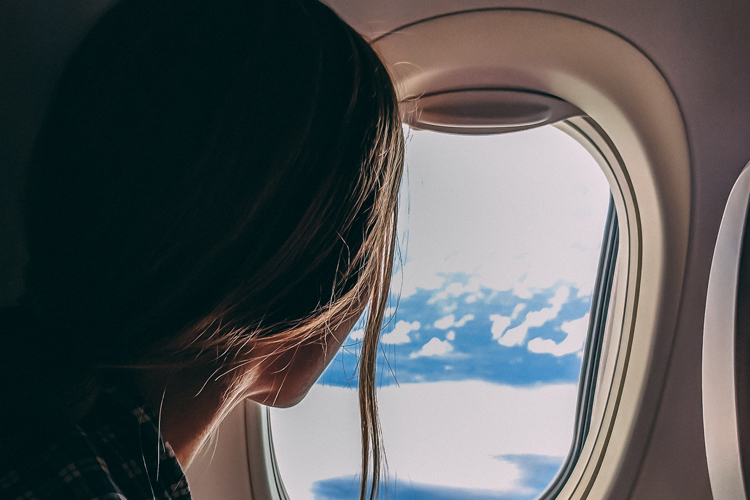Nothing is worse than being stuck with a migraine attack on your flight. You know well that there is nowhere to go until the plane lands. When you arrive at your destination, you need to be functional, not wander around in pain with a brain fog you cannot shake.
We have enlisted several strategies you may adopt to help lessen your migraine symptoms and headaches before, during and after your flight.
Get plenty of sleep
You must get enough sleep before air travel. Although it might be challenging, it depends on your flight’s timing. Always keep it within the boundaries of your usual sleep schedule, as lack of sleep triggers a significant migraine. If it is not possible to maintain a regular sleep routine, try to at least nap before your flight.
Pack your medication
Before you fly, always check your prescriptions to ensure you have enough of your preventive medications. You can easily get migraine medicines such as sumatriptan tablets online in the Uk. Consult your doctor about refills, if necessary. Ensure you have all the appropriate medicines packed not just for your migraine but for any other health-related issues. Also, you must carry the medications you may require during the flight in your carry-on luggage.
Try a neck pillow
A neck pillow may not be the most comfortable, yet it beats the stiff seat backs and headrests of most economy flights. They offer support that may allow you to lean back, relax, and get some rest. Also, they keep you from developing neck pain or joint stiffness, which might bring on an attack.
Block your triggers
You may be sitting beneath the blowing air conditioner. Your seatmate may order the tuna salad sandwich. Perhaps the person in front of you is keeping their overhead light on for the entire flight.
Here are some common triggers and how you overcome them.
Light: Carry a sleep mask or dark, wrap-around sunglasses.
Noise: Carry earplugs or noise-cancelling headphones.
Smells: Carry a small amount of a scent you like or one that relaxes you, like a roll-on bottle of peppermint essential oil.
Drink lots of water
Water is an essential tool in overcoming migraine. Dehydration is a significant trigger, so drink plenty of water. Staying well hydrated may help reduce the odds that you might end up with a migraine. In addition, you must be well hydrated when flying since cabin air is often arid.
Manage smell triggers and bring your own snacks
If certain smells bring about migraines, add nose plugs or a face mask to your carry-on bag, especially if you are around strong odours. In addition, you must also plan to bring your own snacks as well. Skipping meals may trigger migraine. Pack an arsenal of healthy snacks like:
• Fresh fruit and veggies
• Popcorn
• Nuts
• Oat or protein bars
• Whole-grain crackers
Avoid alcohol and caffeine while you’re waiting around for your flight. Both are migraine triggers.
Settle up your stomach
If you’re prone to vomiting and nausea during a migraine attack, carry an air-sickness bag and keep your stomach settled. Helpful actions are:
• Sip ginger ale
• Eat saltines
• Suck on peppermint candies
• Take any anti-nausea medication you brought in your carry-on
Tell your flight attendants
People with migraine feel embarrassed about their condition. Let the flight attendants know that you’re in the middle of a migraine may make your experience comfortable.
They must have helped many passengers with migraine or aeroplane headaches before. They might bring you things that may give you some extra comfort, like:
• Extra water
• Ginger ale
• A blanket or pillow
• Ice or heat packs
If the flight is not overcrowded, they may relocate you to another seat where you may lie down or escape something triggering you.
Reduce Travel Stress
Do you know that stress is a significant trigger for migraines? Do what you can to lessen stress ahead of time, like:
• Bring most of your baggage with you rather than check it.
• Leave plenty of time at the airport to catch connections instead of needing to run—even if flights are delayed.
• Wear loose, comfortable clothing and minimise jewellery and other accessories that may need to be removed at security.
• Make your travel plans well and check the details before you head out.
• Writing down any vital information so that you won’t lose them.
• Arrange your transportation in advance, either to or from the airport.
Relieve your ear pressure
Ear pressure may feel like a voice squeezing your head. It may quickly turn into a full-blown headache or migraine attack. If you notice this pressure building, you may try these strategies:
• Take an antihistamine if required before your flight. It will limit mucus and prevent pressure from building up.
• Chew a piece of gum or candy during takeoff if yawning and swallowing don’t work.
• Keep your lips closed and pinch your nose; now blow gently. It may pop your ears and relieve pressure.
• Yawn or swallow during takeoff.
Conclusion
All kinds of travel-related things may trigger migraine or headaches. Whatever the source, being on an aeroplane may trigger sensory overload. A migraine episode can last from 4-72 hours. It may seriously derail your travel plans if you aren’t equipped with preventive and defensive tactics. Always be prepared to counteract your biggest triggers that may prevent migraine.




